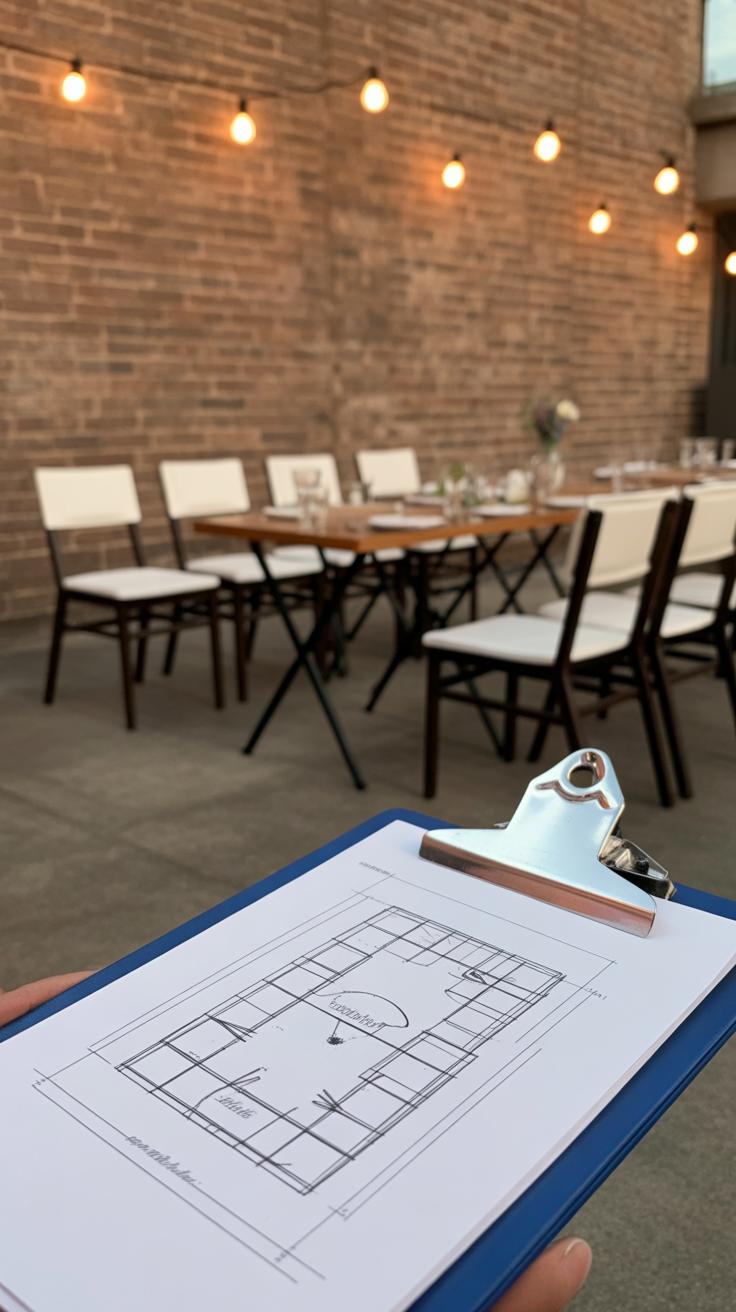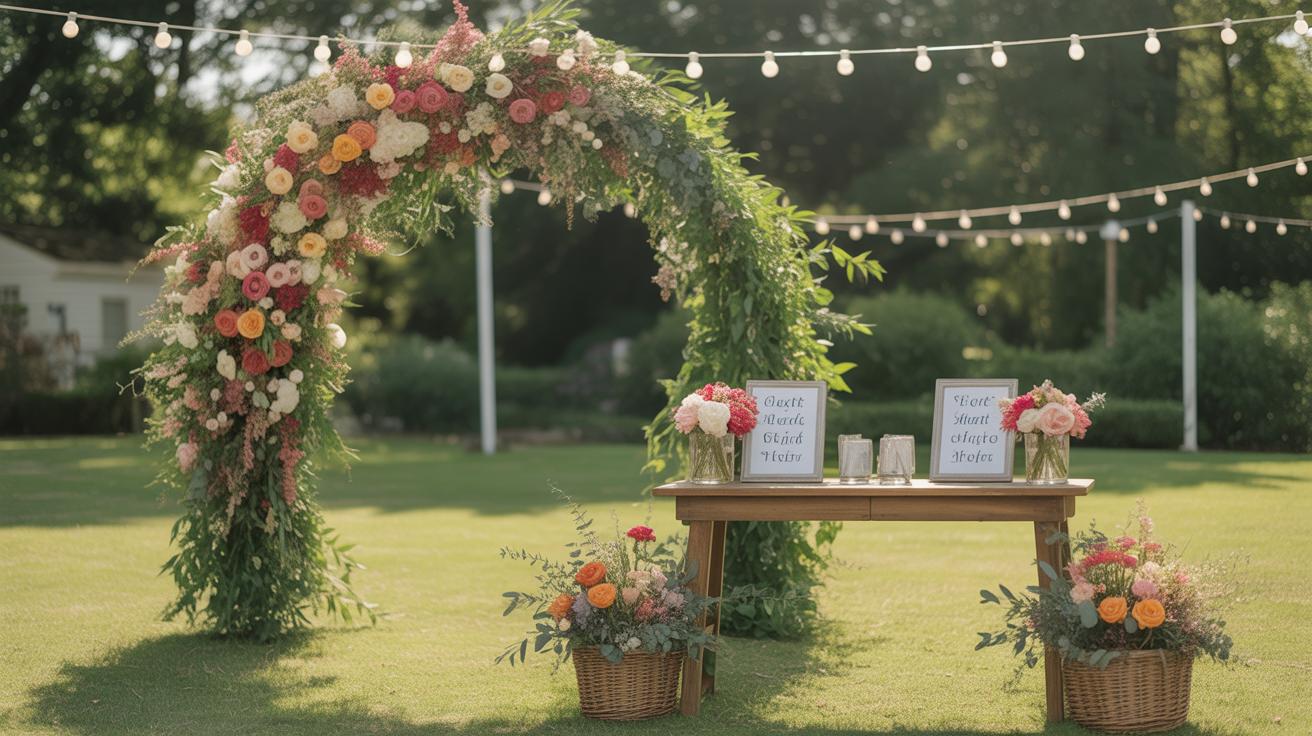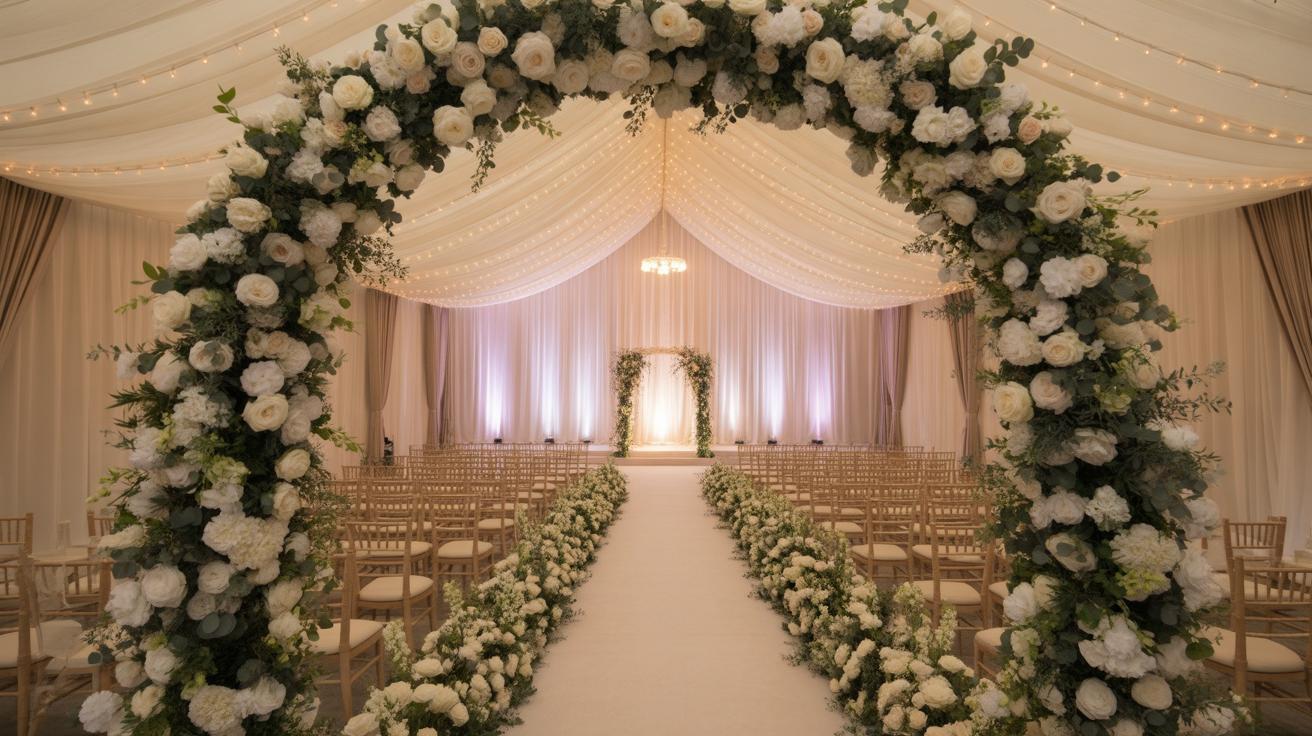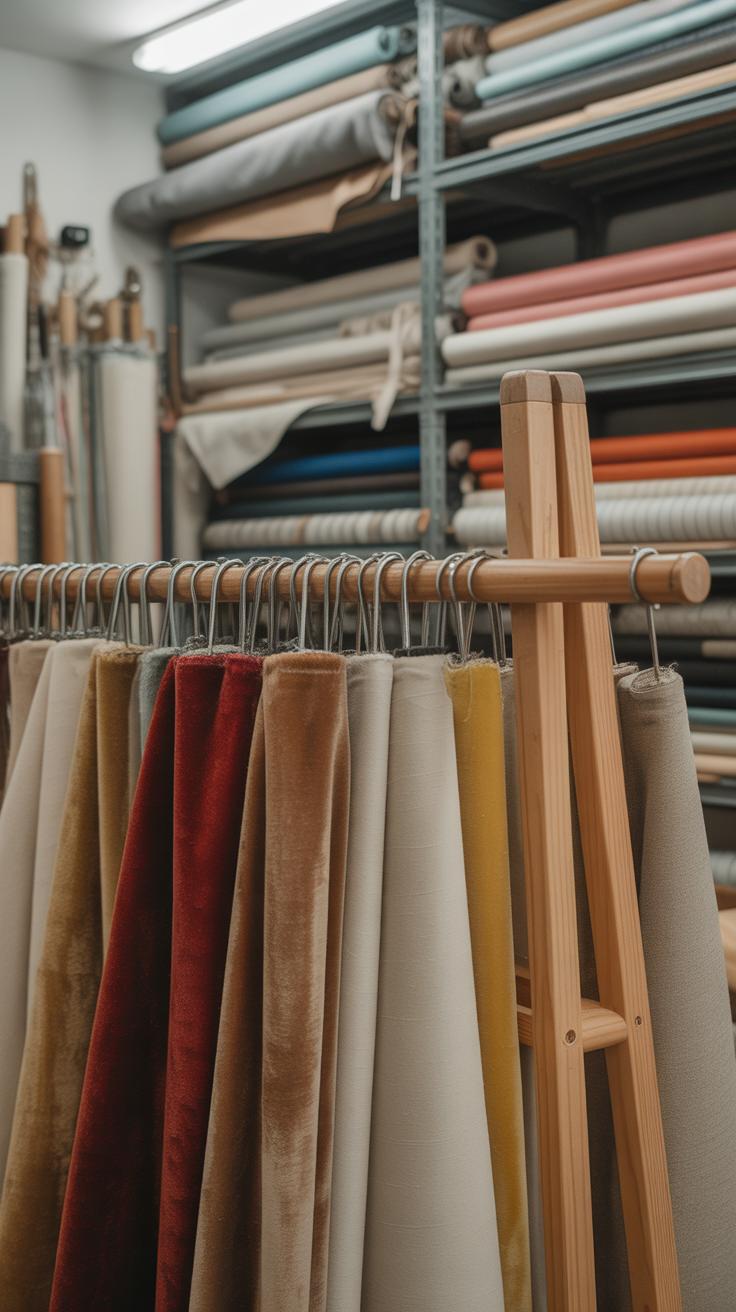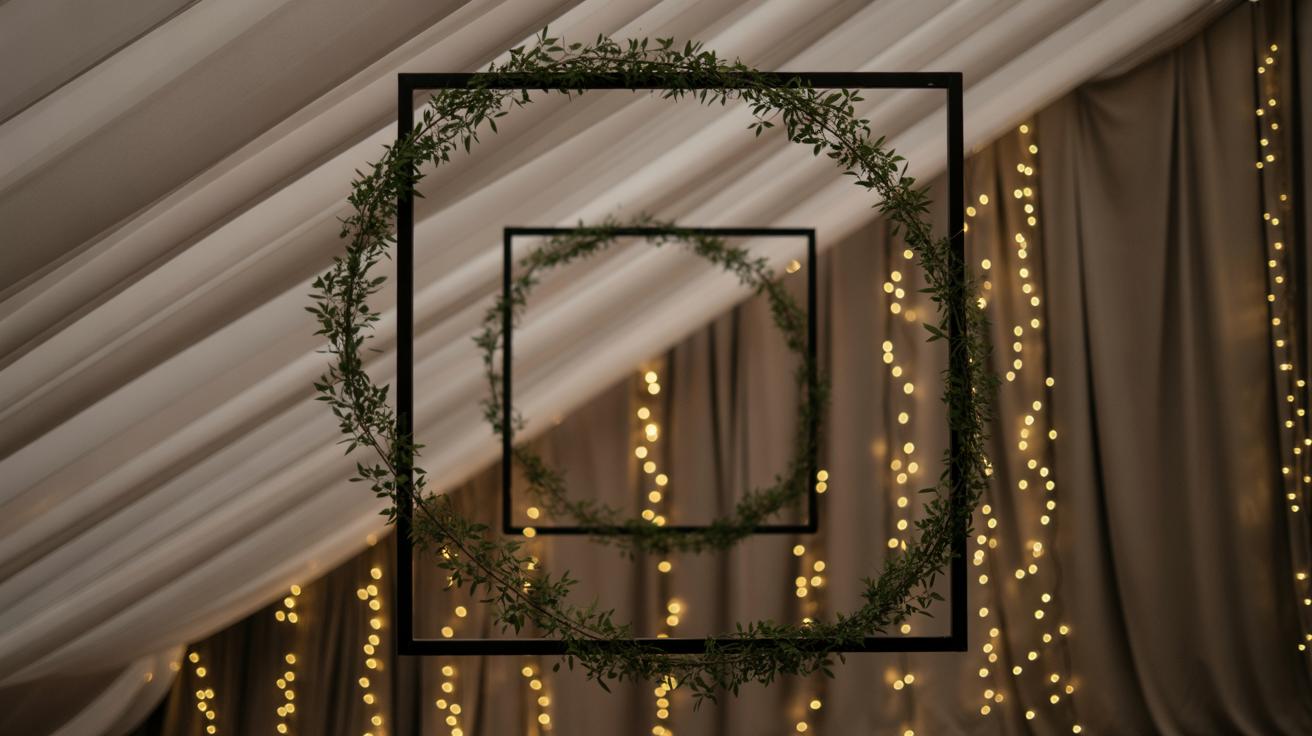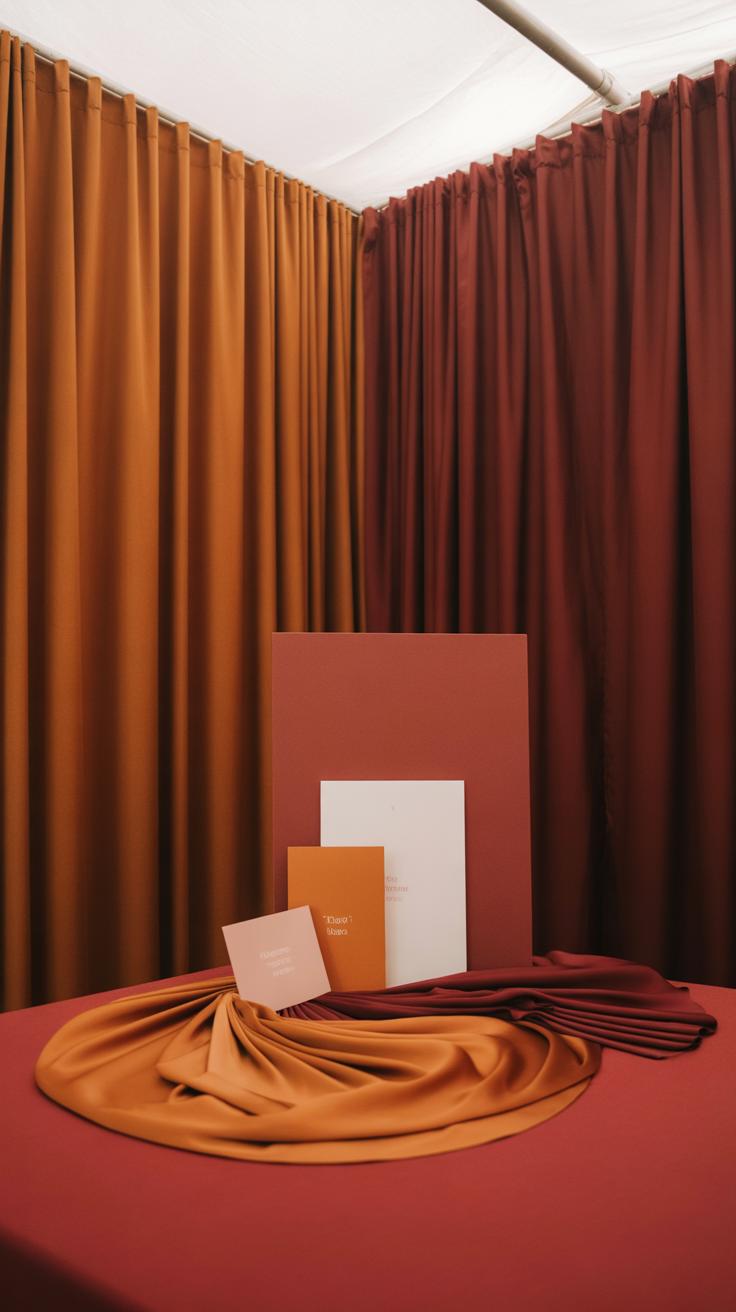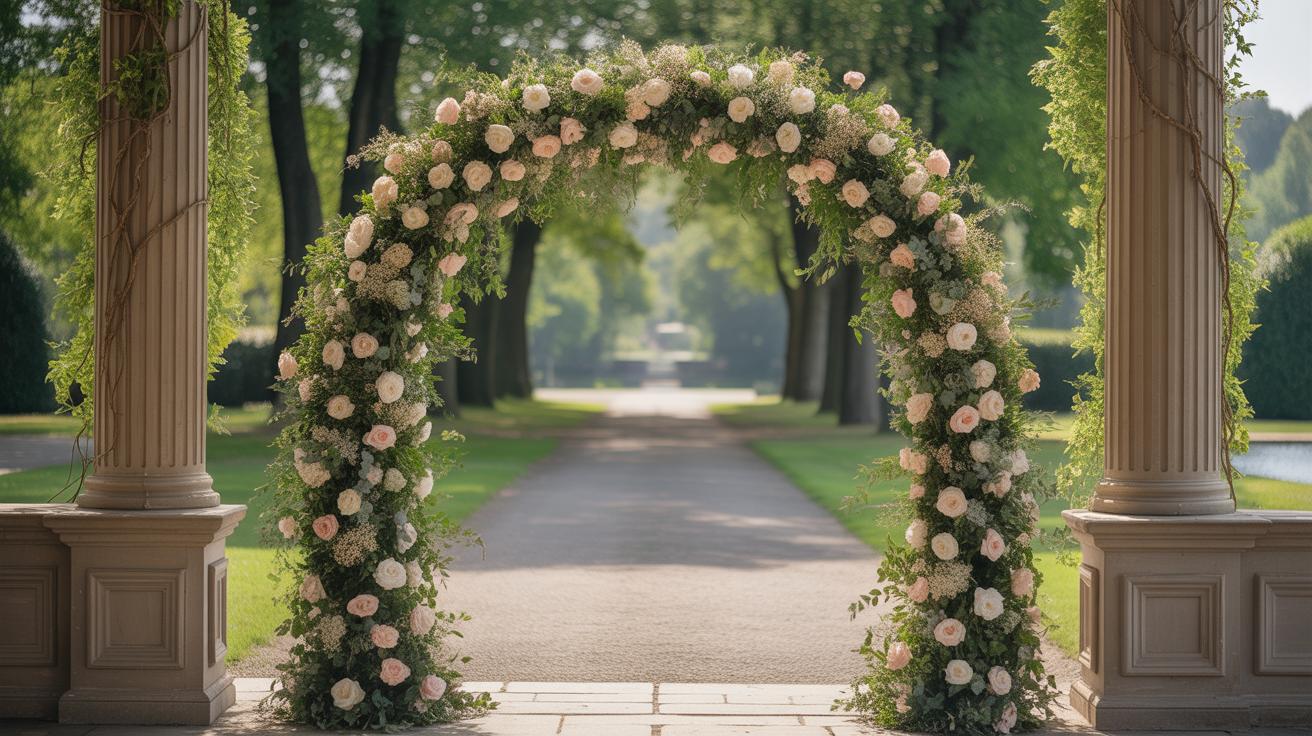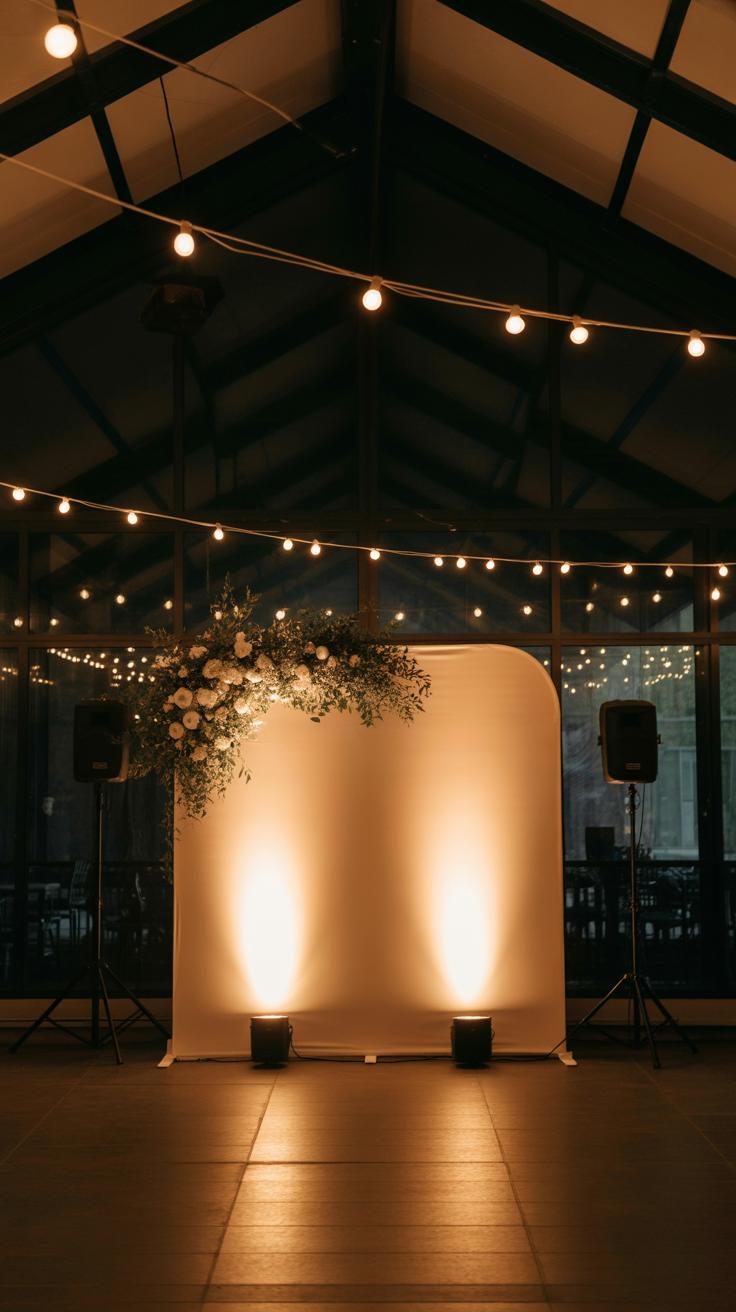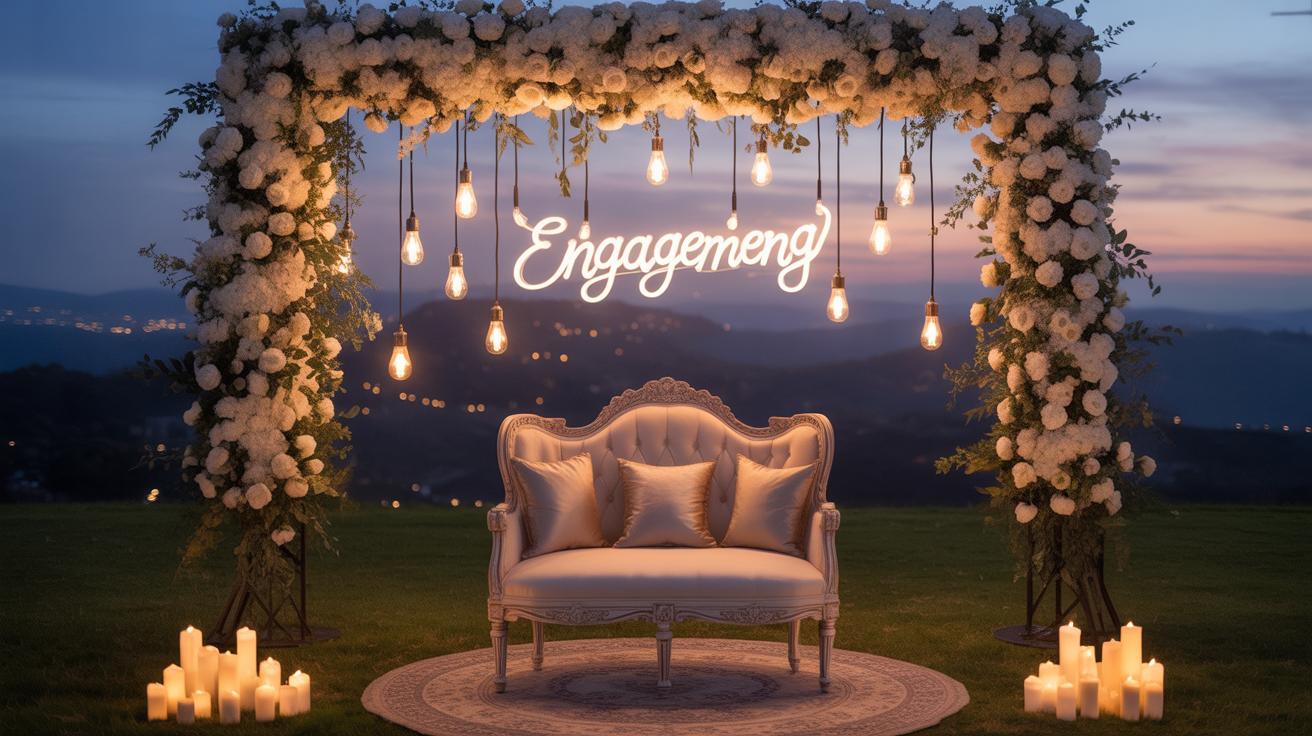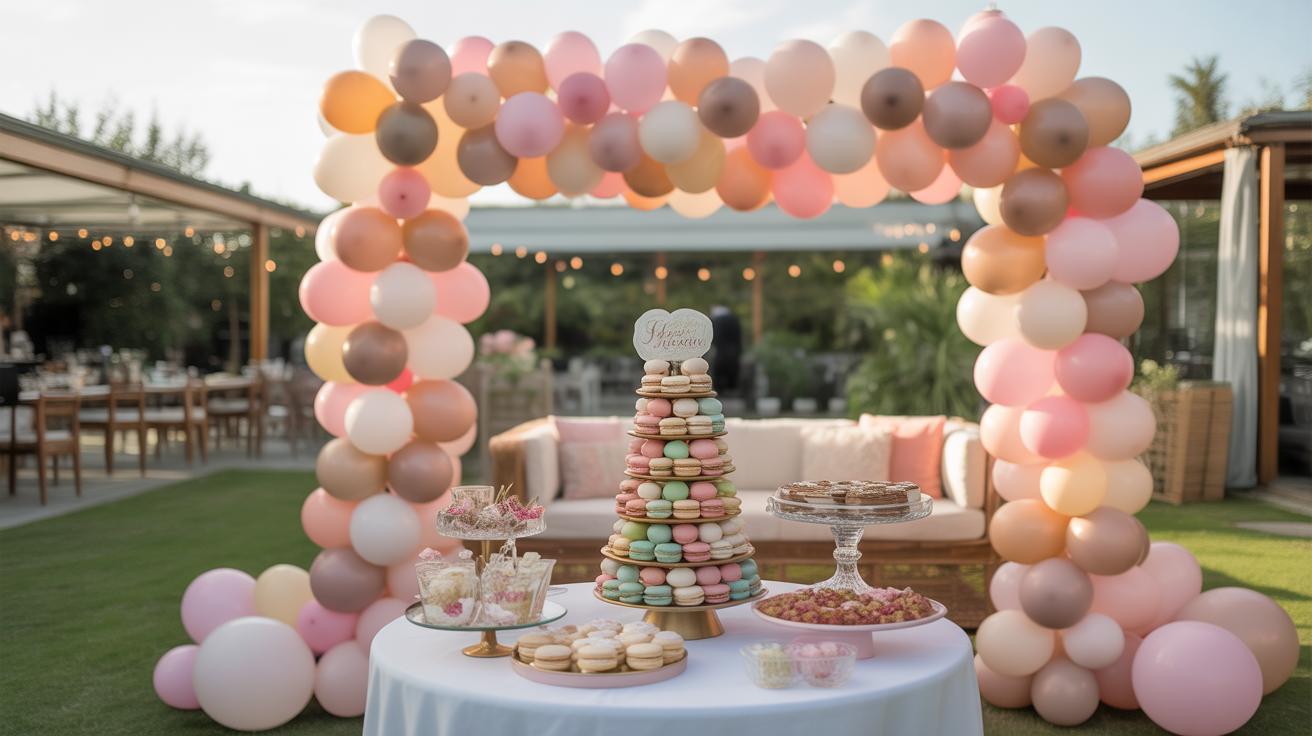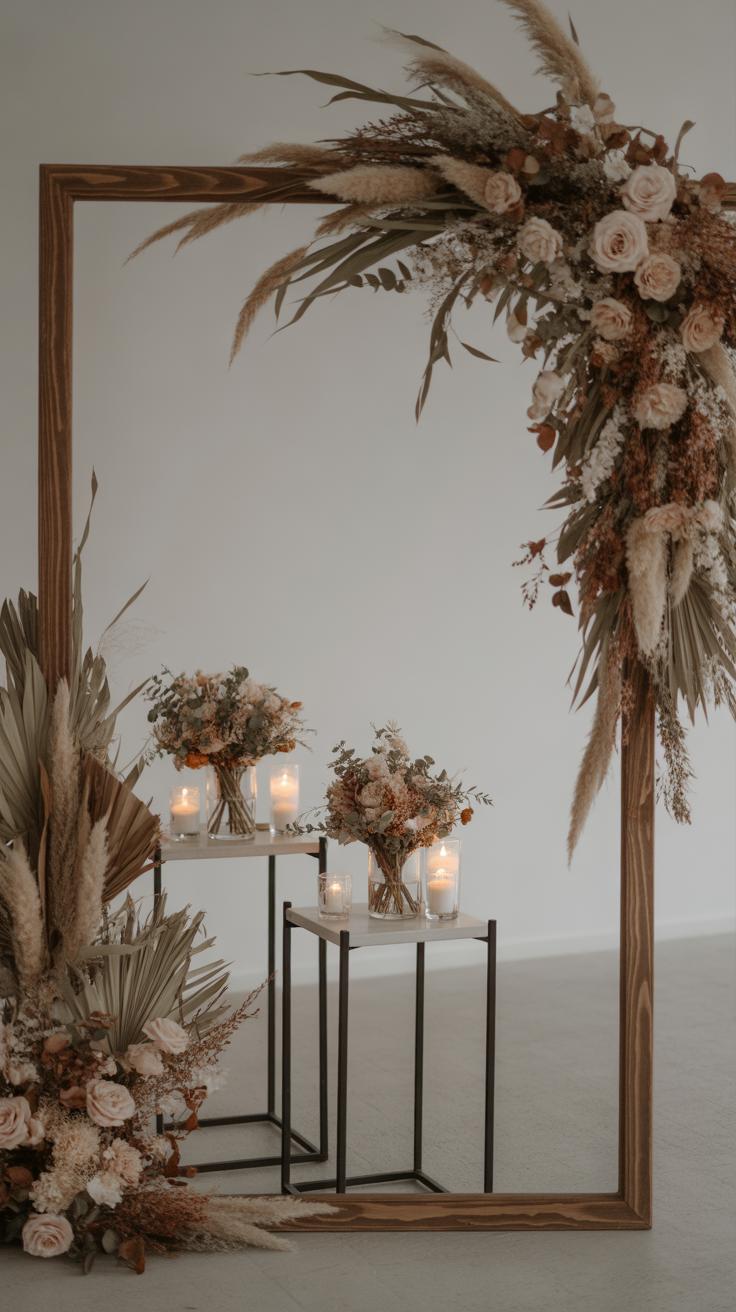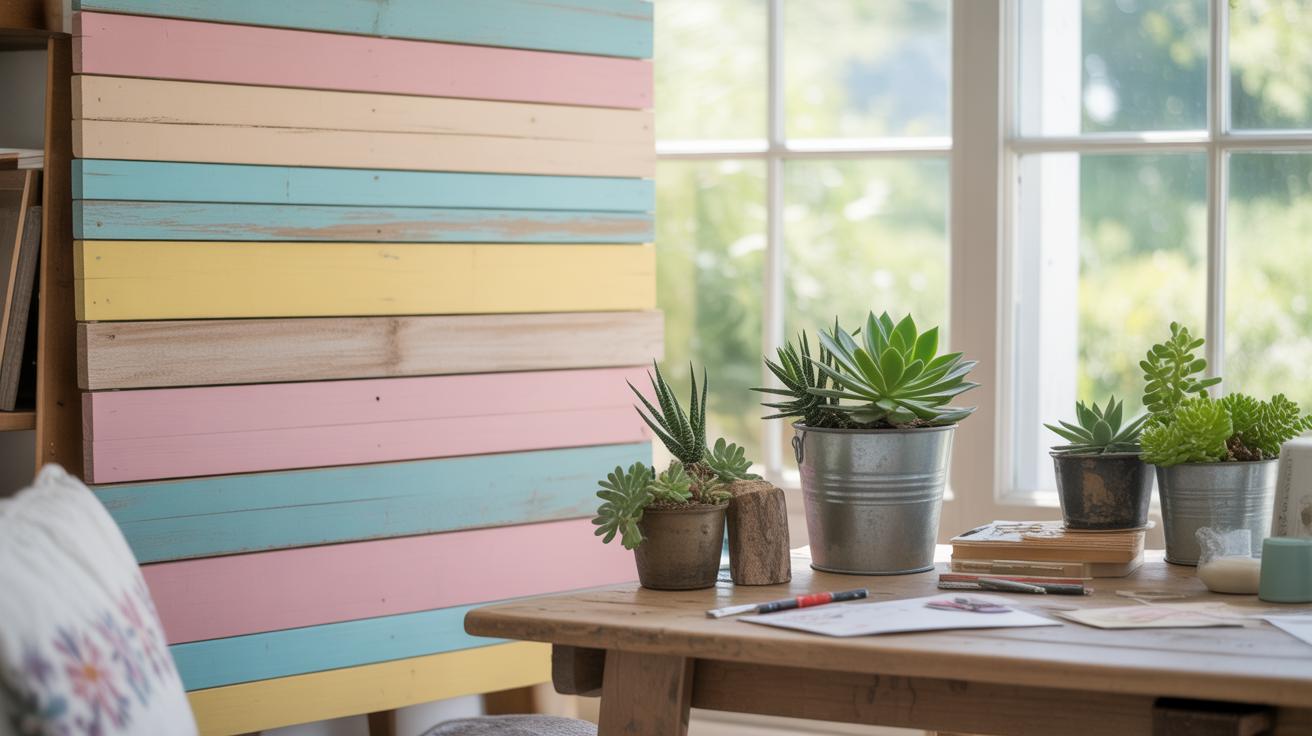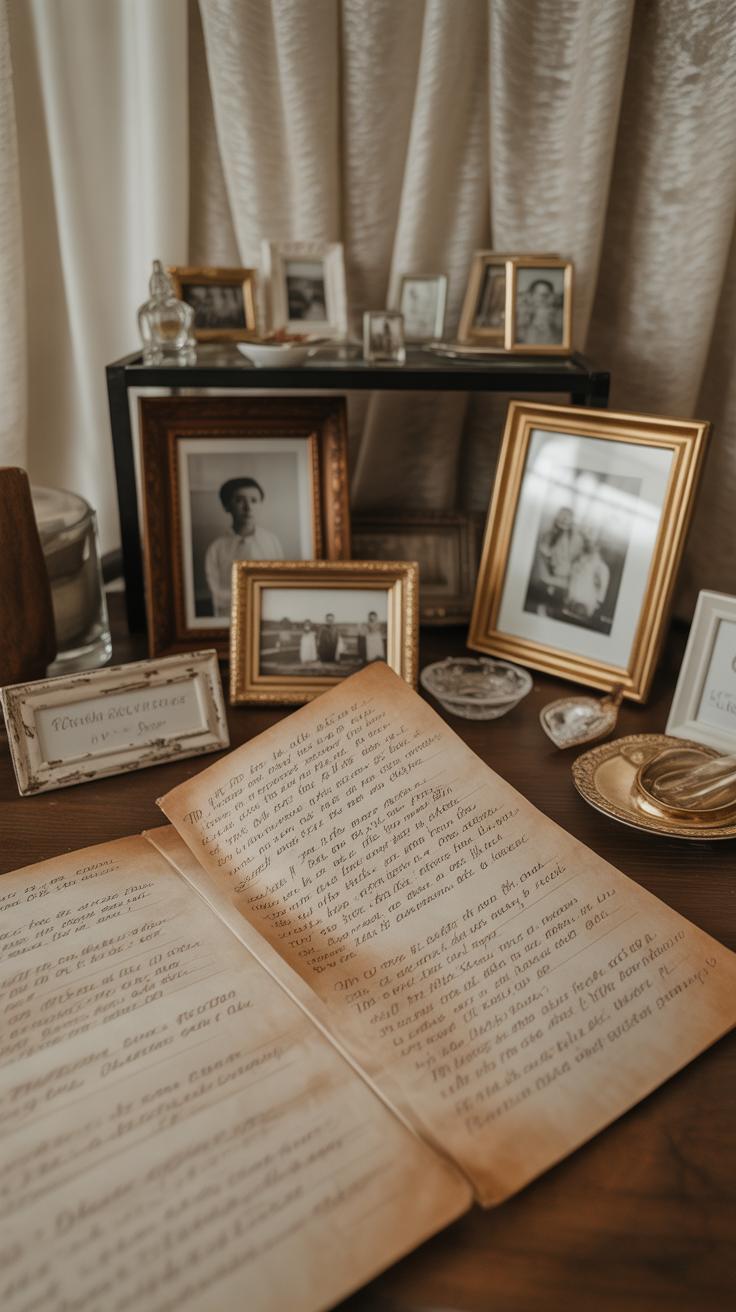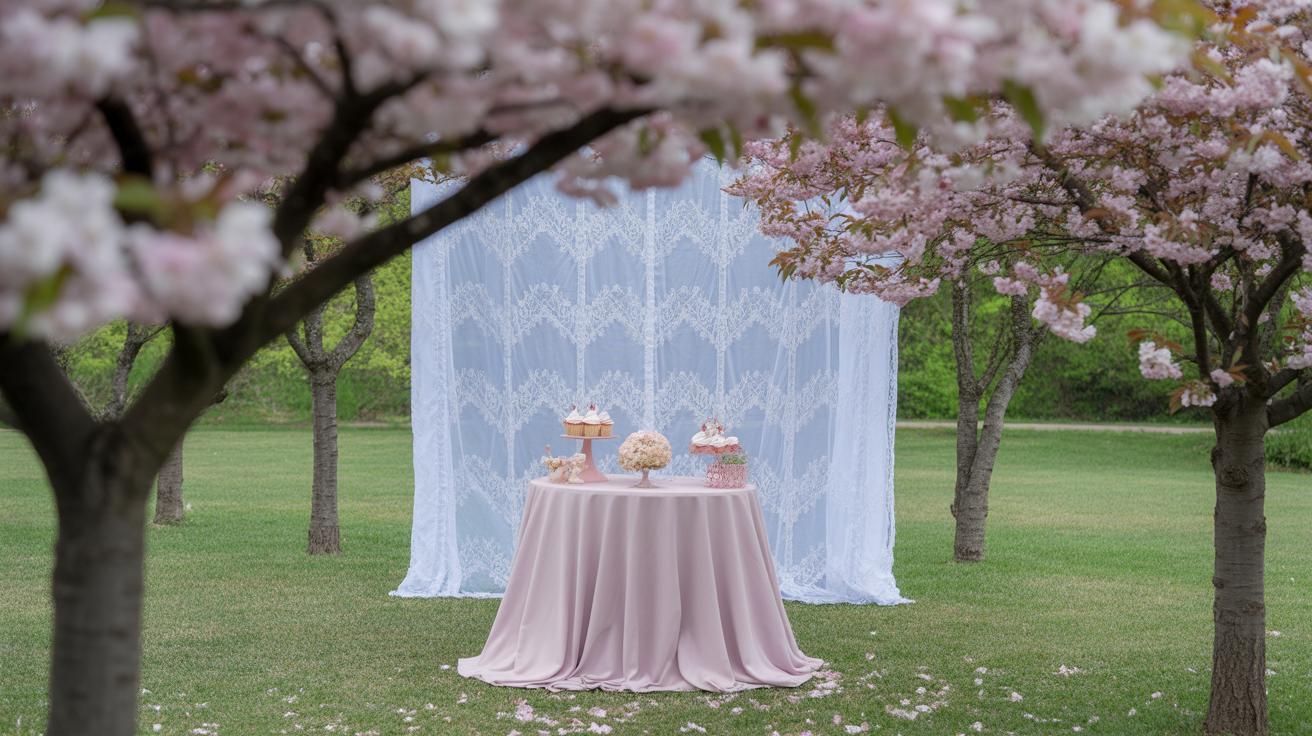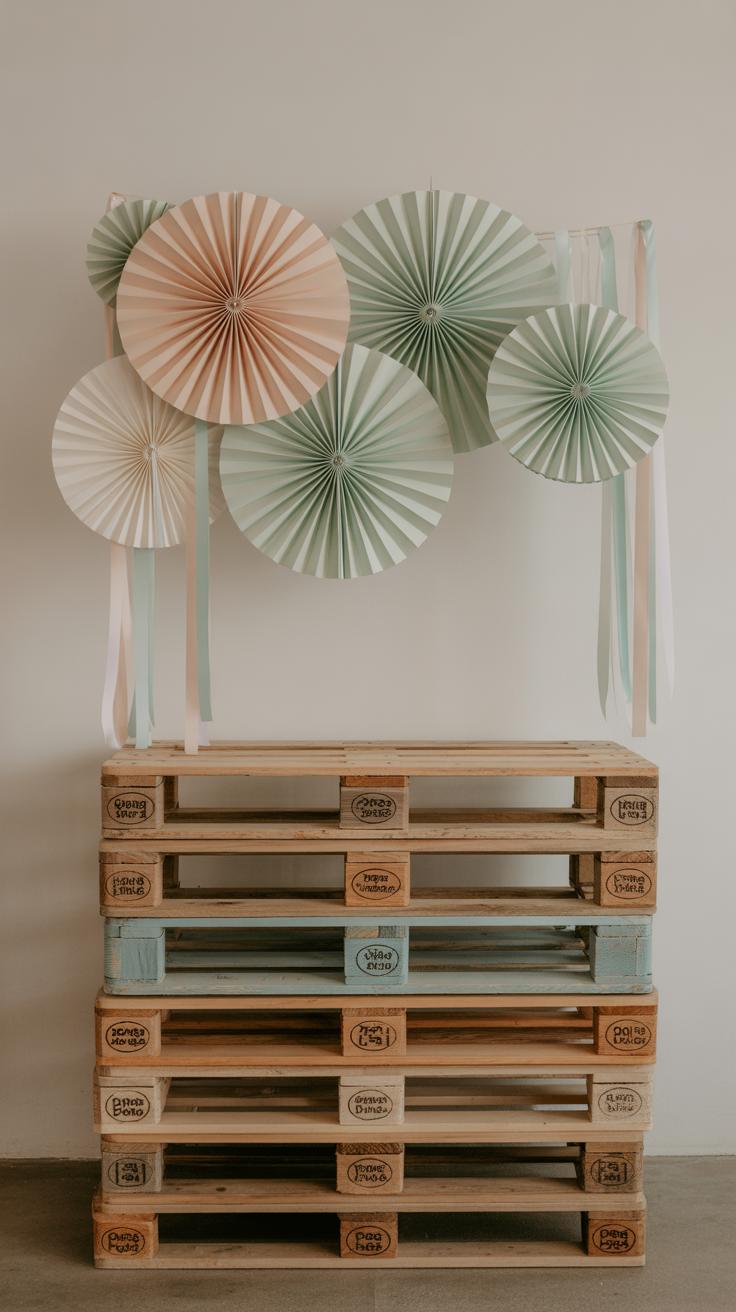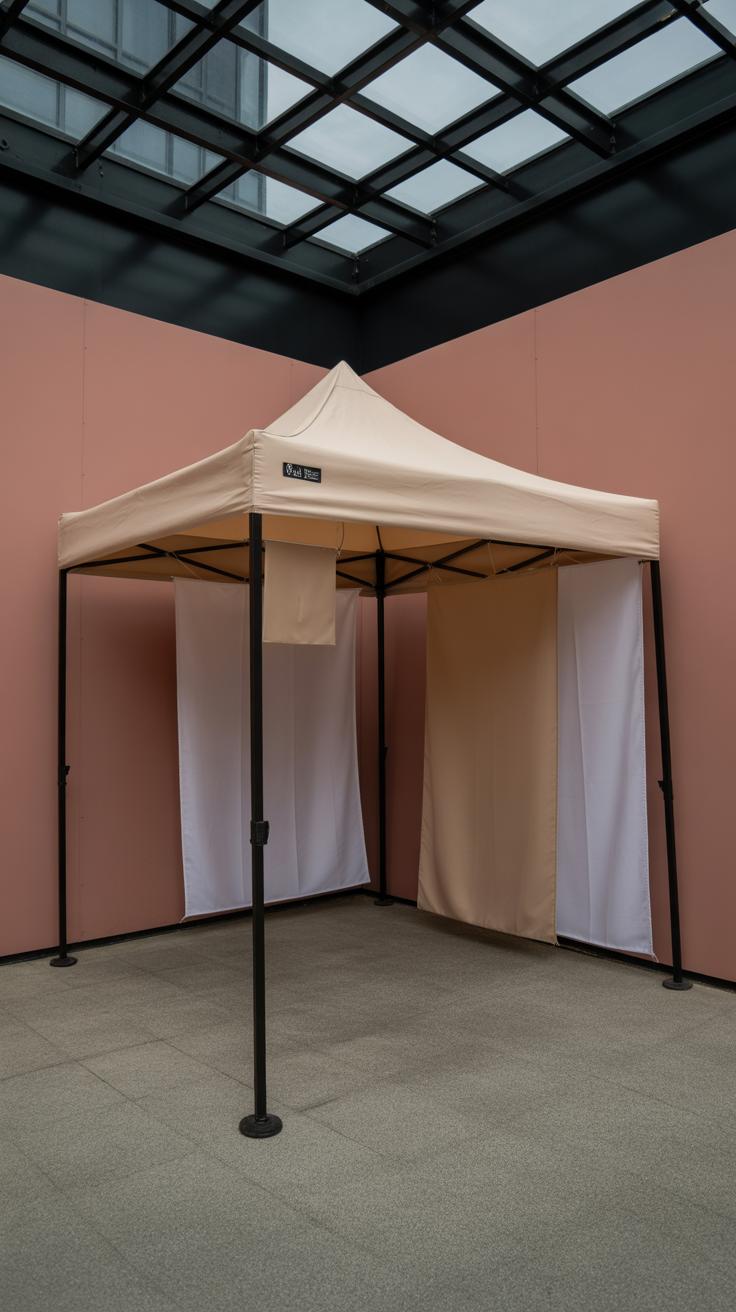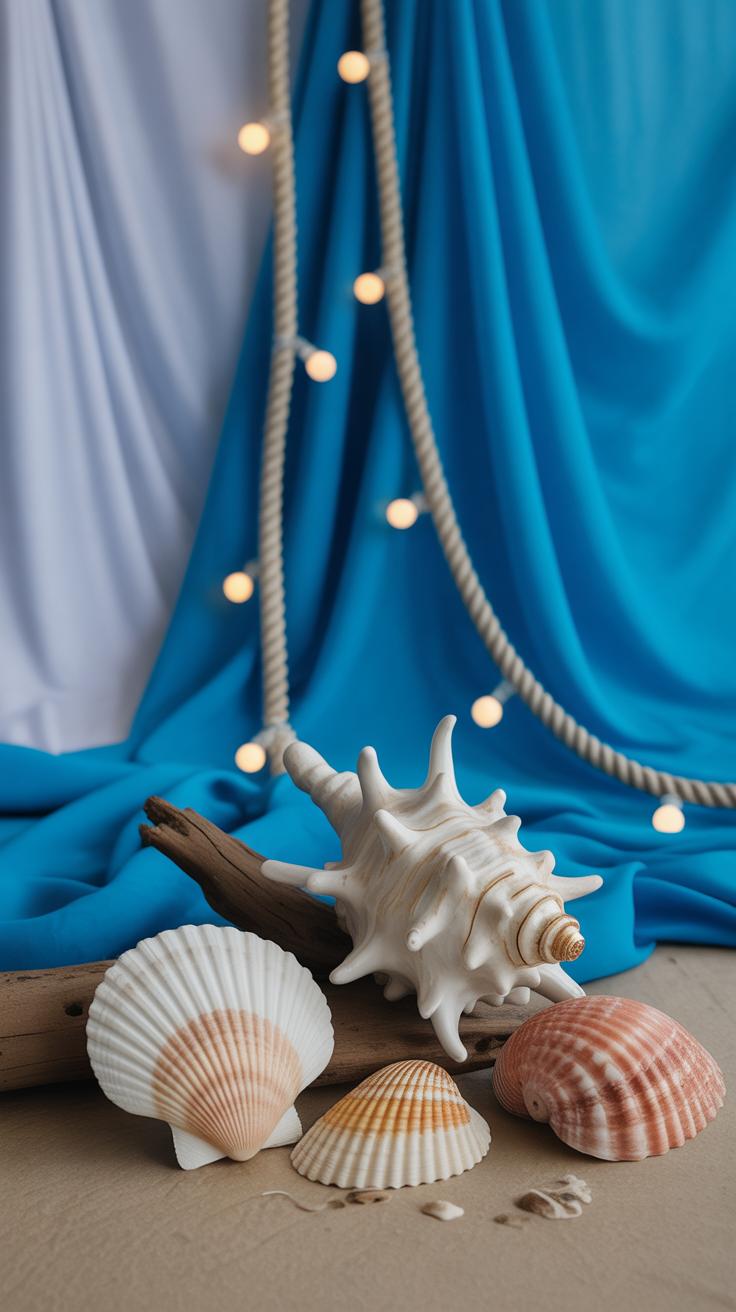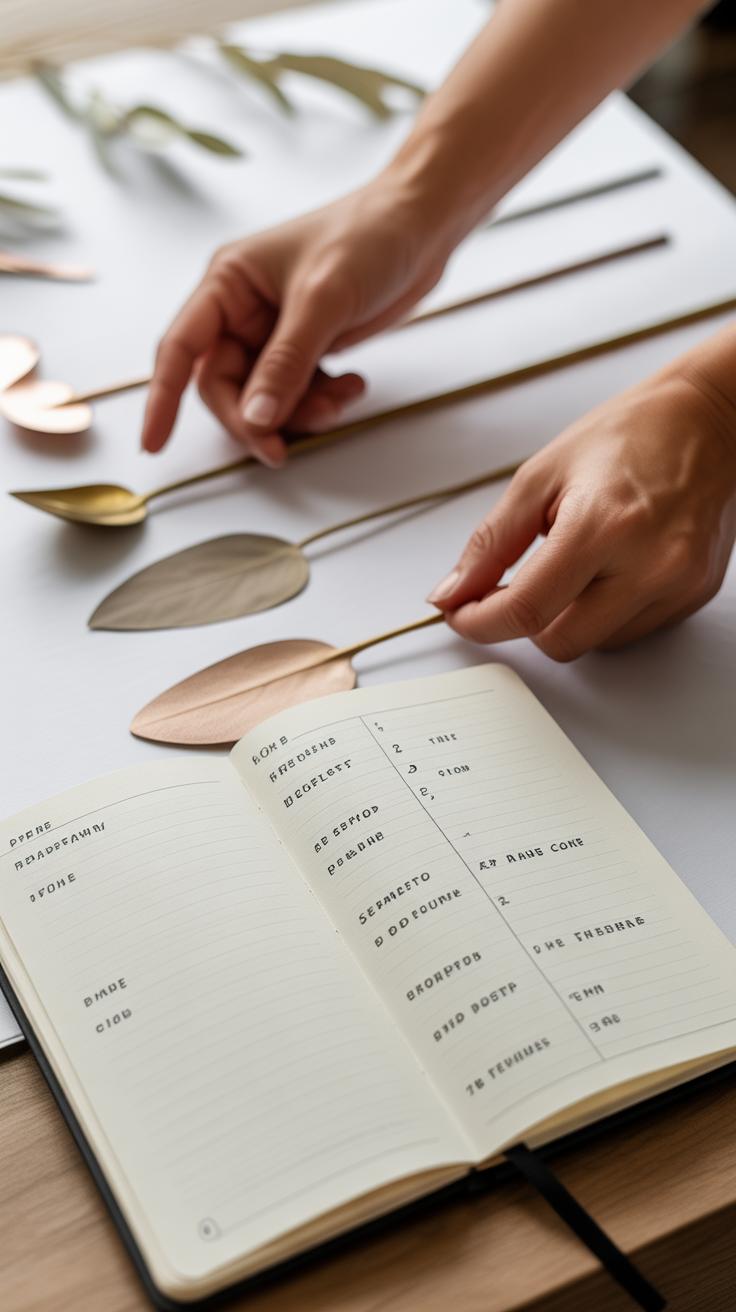Introduction
Indoor wedding backdrop design plays a big role in setting the mood for your cozy venue. It is the focus behind the couple during the ceremony and it brings charm to the photos. Choosing the right backdrop can make your small indoor space feel warm and inviting. It also personalizes the space to match your style and the theme of your wedding.
In this article, you will discover different ideas for indoor wedding backdrops. We’ll talk about materials that work well in small spaces, how to pick colors and lighting, and practical tips for easy setups. You will learn tips that help you create a beautiful backdrop that fits your cozy venue perfectly.
Understanding Your Cozy Venue Space
When thinking about an indoor venue that feels cozy, it often means a smaller or more intimate space. Think about rooms with lower ceilings, warm lighting, maybe even fireplaces or exposed brick walls. These elements create a sense of closeness—not sprawling or vast, but comfortable and contained.
Size and layout matter a lot for your backdrop choices. A tight space might mean you need a backdrop that doesn’t overwhelm or make the room feel cramped. On the other hand, a slightly larger indoor venue can handle a more elaborate design, but then you risk losing that intimacy if the backdrop feels too detached from the room. Also, awkward room shapes or layouts with pillars or recesses can limit where and how you set up your backdrop. So, understanding the quirks of your venue can save a lot of stress later.
Assessing Your Venue Dimensions
Before you pick a backdrop, it pays to get clear numbers on the room’s size. Grab a tape measure and note the height, width, and depth of the space where your backdrop will sit. Take account of nearby furniture, doors, or windows that might interfere.
Try these steps:
- Measure wall width and ceiling height where the backdrop will go.
- Note any fixed elements like columns or vents.
- Consider how close guests will stand or sit in front of the backdrop—this affects scale.
- Visualize or sketch the space to understand proportions better.
With these measurements, you can avoid choosing a backdrop that’s too small to notice or so large it dominates the room uncomfortably.
Identifying Venue Style And Themes
Look around your venue. Is it rustic, modern, classic, or something else? The style usually points toward backdrop materials, colors, and shapes that’ll blend in rather than clash.
For example, a vintage-style venue with wood beams might call for a natural, earthy backdrop. Whereas a sleek, urban loft might suit something minimalist or geometric. If you’re unsure about a theme, it’s okay to lean on the venue’s existing decor a bit—that way, your backdrop feels part of the overall story, not an afterthought or odd add-on.
Ask yourself: Does the venue’s look inspire something simple or intricate? Light or dark tones? That vibe will guide your choices, often more than any trends you see elsewhere.
Picking The Right Materials For Your Backdrop
When choosing materials for an indoor wedding backdrop, practicality matters as much as style. Fabric, wood, and paper each bring something different to the table—and picking the right one depends on your space and the kind of vibe you want.
Fabric Choices For Soft Looks
Fabrics like tulle, linen, and velvet can totally shift the feeling in a cozy venue. Tulle offers a light, airy touch; it flows gently and softens edges but can feel a bit too delicate if your space is drafty or if guests might brush against it. Linen brings a natural, rustic feel. It’s thicker than tulle, so it adds some weight and presence without overwhelming a small room. Velvet, though, adds depth and a hint of luxury—darker velvets can make a space feel intimate but might also make it seem smaller, so it’s a bit of a trade-off. I’ve seen couples pick linen for a relaxed look but then use velvet accents to avoid things feeling too casual. Combining fabrics could work, if you’re open to mixing textures.
Using Natural Elements Like Wood
Wood adds structure immediately. A simple wooden frame or panel can anchor your backdrop and make the whole setup feel grounded. The grain and tone of wood bring a warmth that fabric alone can’t offer. But, wood can be heavy and tricky to move, especially in tight spaces. Plus, if the wood is too polished or modern, it might clash with a more intimate, rustic venue. Some of the best results come from unfinished or reclaimed wood—it adds character without screaming for attention. I once worked on a wedding where a rough oak frame around sheer fabric made the space feel both cozy and intentional. Wood invites a bit of nature indoors, which tends to enrich a warm atmosphere.
Choosing Colors That Warm Up Small Spaces
When working with indoor venues, especially the smaller, cozier ones, color choice can really make or break the atmosphere. You want the room to feel inviting, but not cramped or overwhelming. It’s a bit of a balancing act, frankly. Picking the right tones can create warmth without closing in on your guests.
Warm Color Tones And Their Effects
Soft reds, gentle oranges, and muted browns tend to bring a subtle warmth to your backdrop. They don’t just add color; they create a feeling—like a quiet embrace or a comforting blanket. But be careful—too intense, and these colors may dominate the space. Think of a deep terracotta or a dusty rust instead of a bright, fiery red. These softer shades gently lift the mood without shouting for attention.
In my own experience setting up a small indoor wedding, a burnt orange fabric paired with light wood accents made the space feel welcoming. Guests commented on the cozy vibe, which stuck with me afterward. So, warm hues aren’t just pretty—they have an effect you can almost see in how people move and connect.
Neutral Colors For Versatility
Neutrals like whites, creams, and soft grays serve as a blank canvas that’s anything but plain. They allow other details—flowers, lighting, textures—to shine. Plus, they open up the space visually, making it appear larger than it is. But saying “neutral” doesn’t mean “cold.” A creamy white with just a hint of yellow can feel very comfortable and inviting. Gray is a bit trickier; it can lean sterile unless paired thoughtfully with warmer accents.
Personally, I find that combining neutrals with just a touch of warmth—like a beige backdrop with subtle brown garlands—strikes a good chord. It keeps things calm and adaptable but avoids that empty, overly clinical look. Plus, neutrals often work better if your venue’s lighting varies; they let you play with other design elements more flexibly.
Choosing colors for small indoor backdrops isn’t just about picking what looks good. It’s about feeling the space and imagining how guests will experience it. Will they linger? Feel at ease? Or will the colors close in too much? These are questions worth asking yourself before making a final choice.
Lighting Techniques To Highlight Your Backdrop
Lighting can change everything in an indoor wedding setting. It’s not just about seeing the decorations—it’s about creating atmosphere, depth, and focus. When you think about lighting your backdrop, you have a few options that each bring a different feeling and function into play. Fairy lights, uplighting, and spotlights all have roles, but they need to be balanced carefully.
Fairy lights, those tiny twinkles strung through the backdrop, add a warm flicker that doesn’t demand attention but gently pulls your eyes in. Uplighting casts soft colors or gentle whites up the walls, giving dimension and a subtle halo around the backdrop. Spotlights, on the other hand, are more deliberate. They can highlight the couple and décor, but if placed wrong, you get harsh shadows or glare, which nobody wants.
Experiment with layering these lights. Maybe use string lights as a soft base, add uplighting to shape the space, and then carefully position spotlights to make sure eyes settle exactly where you want. It’s a little tricky—sometimes less is more, but other times a little extra sparkle can make the whole room feel intimate and special.
Soft String Lights For A Gentle Glow
String lights have a way of making an indoor space feel cozy without feeling overwhelmed. Think of them like a gentle glow that wraps the backdrop in warmth. When draped loosely or woven around elements like greenery or sheer fabric, they add a shimmer that’s romantic but subtle.
What I’ve noticed with couples who use string lights is it softens the whole scene—in a low-lit venue especially, it feels less stark. You don’t need something flashy; the softness invites people to relax, even lean in a little closer. Plus, they’re flexible—you can contour a wall, hang from ceiling beams, or frame the backdrop edges.
Spotlights To Focus Attention
Spotlights demand planning. You want them angled carefully so the couple and the backdrop become the centerpiece without creating harsh lines or unflattering shadows on faces. Positioning is key—often placing lights slightly above and to the side works best.
It’s tempting to crank up the brightness, but dialing it back sometimes creates a more flattering and natural look. The spotlight should pull focus, not blind anyone. Also, using diffusers or soft gels can ease the light’s edges.
What works well is testing the placement beforehand—shine the lights, watch for shadows, then adjust. This step often makes a big difference between flat, uninteresting photos and ones that feel vibrant and alive. If you want your guests to focus on the vows or that special first dance moment, these lights make a subtle, practical impact.
Incorporating Floral Arrangements In Your Backdrop
Fresh Flowers For Vibrant Color
Using fresh flowers in your indoor wedding backdrop instantly lifts the space. There’s something about real blooms that brings life and subtly brightens the atmosphere. You might want to pick flowers that echo your bouquet’s palette—this creates a gentle visual link that feels thoughtful, not forced.
Think about seasonal blooms too; they’re often more fragrant and last longer indoors. You could cluster bold pops of color or go for soft pastels that don’t overwhelm the room. Sometimes, just a few well-placed blooms are enough to make a difference. Overdoing it might clutter the backdrop or compete with other decor.
Ever noticed how flowers affect the mood? The scent alone can soothe nerves—not that weddings are ever completely stress-free—but it helps. Plus, flowers bring in a touch of nature that almost feels like the outdoors sneaking inside your cozy venue.
Using Greenery And Foliage
Leaves and greenery add a kind of texture that flowers often miss. They can frame the backdrop or fill in gaps without drawing too much attention. Imagine long eucalyptus strands or ferns trailing across a wooden frame. It feels fresh without being too much.
Greenery doesn’t compete with your other decorations—sometimes it even tones them down in a good way, balancing bright colors or harsh lines. If flowers aren’t your thing, or maybe you want something less fussy, foliage offers a quiet, natural vibe.
One thing to keep in mind: too much greenery can feel heavy or dark, especially in an already small or dim space. So, layering different shades and textures is usually better than just one big chunk of leaves. Honestly, it can take some trial and error, but when it works, it really makes the whole scene feel alive and inviting.
Adding Personal Touches To Your Backdrop
When you want your backdrop to feel truly yours, adding personal elements can make a big difference. It’s not just about decoration; it’s about telling your story in a way guests can quietly notice or feel. Photos are an obvious choice, but how you arrange them matters more than you might think.
Photo Displays With Meaning
Instead of a simple collage, try grouping photos by themes—first dates, travels, or family moments. Hanging a string of pictures with little clips adds character and freshness. Or lean toward framed photos placed on shelves integrated into the backdrop. Mementos like ticket stubs, pressed flowers from a special trip, or even little trinkets can be tucked in subtly among the pictures. These details invite curious guests in, but don’t overwhelm the space.
Incorporating Custom Signs And Letters
Names or initials crafted from wood, neon, or even velvet letters can wrap your backdrop in personality. You might choose your combined initials or a short quote that means something. Some couples opt for playful phrases, others prefer heartfelt lines. The font choice and size can shift the vibe—from casual to more elegant. Sometimes less is more, but beyond names, little symbols or icons important to you can work, too—like a small leaf if nature is your thing, or a delicately designed heart.
Have you thought about how these touches reflect you, beyond just looking pretty? It’s tricky to balance style and meaning, but that’s where your backdrop starts to feel genuinely warm, intimate, and altogether… yours.
Creative DIY Backdrop Ideas For Budget Friendly Weddings
Making an indoor wedding backdrop yourself can be surprisingly simple and still feel quite special. Paper and fabric crafts often steal the show here because they’re accessible and let you add a personal spin without spending much. For example, paper flowers can range from tiny clusters to large statement pieces, and you really just need colored paper and a bit of patience. Fabric garlands—think strips of soft cotton or burlap tied on string—can add a cozy texture that suits smaller venues nicely.
But you don’t have to stop there. Everyday items can turn into unexpected treasures when you think outside the box. Old picture frames, vintage plates, or even string lights tangled into a rustic net can create an interesting focal point. I once saw a couple drape thrifted scarves artistically on a plain wall—it gave the backdrop a softer, layered look without much effort or expense.
What household things around you could double as decor? Look for something with texture or color, and don’t be afraid to mix and match. It’s kind of fun to wonder what random object might become part of your wedding’s story, isn’t it? Remember, these DIY pieces don’t need to be flawless—to me, their charm comes from the little quirks and the story behind making them.
Space Saving Backdrop Setups
When you’re working with a small indoor venue, space becomes a real challenge. You want a backdrop that looks great but doesn’t take up too much room or block traffic flow. Designing for limited spaces means focusing upwards and on versatile options you can move around easily.
Vertical Designs To Save Floor Area
Tall, narrow structures work well to keep the floor clear. Think of slender frames, ladders, or columns decorated with flowers, fabric, or lights. Hanging elements from the ceiling or walls is another option. From fairy lights to greenery, these pieces catch the eye without gobbling up ground space. You might hesitate because tall setups look imposing, but done right, they add dimension without crowding.
Foldable And Movable Backdrops
Foldable screens and portable panels offer flexibility you don’t realize you need until the day of the event. They’re light enough for one or two people to set up and pack away quickly. Some come with built-in stands that collapse flat, which can be a lifesaver if you want to rearrange the space as the event progresses. I’ve noticed couples often overlook how much easier movers make the overall flow before, during, and after the ceremony.
Choosing these kinds of setups also means you can test different locations in your venue with minimal effort. It’s almost tempting to go overboard with heavy elaborate designs, but these practical solutions keep your venue feeling open and inviting. So ask yourself: how often will you need to move the backdrop? That can guide whether portability matters more than looks in your setup.
Matching Backdrop To Wedding Theme
Rustic And Natural Themes
When you think of rustic weddings, the backdrop should feel connected to nature—almost like it belongs there. Materials like reclaimed wood, burlap, and greenery create an authentic vibe. Twine-wrapped branches or simple wooden frames dotted with moss or dried flowers often bring that rough charm indoors quite well.
Using soft warm lighting, such as string lights or lanterns, can add to the coziness. Don’t overlook rough textures or imperfections. They’re part of what makes rustic décor feel inviting rather than sterile. You might want to play with layering—like ferns over a simple burlap base—so it looks handmade but intentional. It’s that little bit of rawness mixed with comfort that people seem to love.
Modern And Minimalistic Styles
Modern backdrops usually skip the clutter. Clean lines and neutral palettes dominate here. Think sheer white curtains or large panels with subtle geometric patterns. A simple fabric drape, maybe paired with a few well-placed statement elements such as metal hoops or single, bold flowers, can really hold the space without overwhelming it.
Don’t try to add too much. Minimalism is about quiet presence, not absence. Even choosing monochrome colors can make a strong impact if the shapes and placement are right. Sometimes, less really is more, but it’s tricky to get just right—too bare might feel cold, and too much ruins the point.
Planning The Backdrop Setup And Timeline
Scheduling Setup With Venue Coordination
Setting up your wedding backdrop indoors needs a bit of planning around the venue’s schedule. You’ll want to talk with the event coordinator early on. Ask about when you can access the space before guests arrive—sometimes that window is tight or shared with other vendors. It’s not unusual to find the setup times shorter than you expect, so be ready.
Consider booking extra time if possible. That way, you’re not rushing or cutting corners. Make a clear list of what needs to be done: hanging fabric, arranging flowers, placing lights. Sometimes, even a simple backdrop takes longer, especially if it involves delicate or heavy materials. You might want to check where you’ll store supplies during the day, too.
Testing And Adjustments Before The Ceremony
Once your backdrop is up, don’t just leave it be. Take time to test the lighting, since indoor venues can be unpredictable. Maybe the overhead lights cast odd shadows or don’t highlight the colors as you hoped. Try different angles or add soft bulbs if needed. I remember one wedding where the first attempt made the bride’s dress blend into the backdrop—it took a quick switch of light placement to fix.
Stability matters. You don’t want any swaying or parts falling just as everyone’s watching. Give everything a gentle push or nudge to check firmness. If you hear creaks or see shifting, tweak the setup. It’s surprising how often small adjustments make a big difference. Testing early leaves no room for last-minute panic. What if you find something wrong with the backdrop? You’ll want time to fix it, not just hope for the best seconds before the ceremony starts.
Conclusions
Choosing an indoor wedding backdrop is more than just decoration. It sets the tone for your ceremony and makes your cozy venue special. You now know how to select materials, colors, and lighting that fit well in smaller indoor spaces. Consider your venue’s style and the mood you want to create to help guide your choices.
Remember, a good backdrop does not have to be complex. Simple, clear, and well-planned designs often leave the best impression. Use ideas here as a starting point and add your own touches for a unique and warm wedding atmosphere you and your guests will enjoy. Your backdrop can truly make your wedding memorable.


